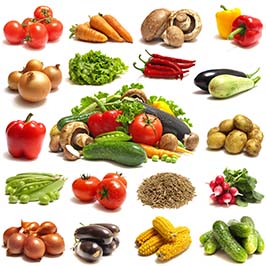Companion Garden Planting For Better Harvest and to Repel Harmful Insects
So, you are giving your plants all the proper nutrients they require; they are getting enough sun, water, and the care you bestow on them, but they still struggle to grow? Well, it’s about time you know about companion gardening.
Some plants do not like to grow in alliance with a number of particular plants while others cherish their association with selected some. For instance, there are a few leguminous plants that are friends with bacteria in the soil, and with their help, they turn the soil into a very effective plant food. This nutrient rich soil makes a brilliant home for some of the plants, while retards the growth of others. Similarly, some plants also become a good pesticide, thus deterring bugs. To help you growing your plants perfectly, here’s a list showing the friends in your garden that must be grown together and the enemies that need to be kept apart from each other.
Alliums – (onion, garlic, chives, scallion, shallot, leek and such)
Friends: chamomile, carrots, tomatoes, brassicas, dills and strawberries. Members of brassica commonly used for food include cabbage, cauliflower, broccoli, Brussels sprouts, and some seeds.
Foes: leguminous plants like beans and peas.
Asparagus
Friends: dills, carrots, tomatoes, parsley, coriander, Aster plants and basil.
Foes: garlic, potatoes and onions.
Basil
Friends: tomatoes, peppers, petunia, oregano, beets, okras, eggplants, radishes, cabbages, cauliflowers and squashes
Foes: rue and sage
Basil is also a very good mosquitoes and flies repellant.
Beans
Friends: carrots, chard, eggplants, dills, spinach, cucumbers, corn, strawberries, potatoes, marigold, radishes, lettuces, larkspurs, beets and okra.
Foes: tomatoes, chili, peppers and alliums
Beets
Friends: broccoli, Brussels sprouts, cabbages, bush beans, garlic, lettuce, mint, kohlrabi, chard, onions and brassicas
Foes: runner or pole beans, charlock and field mustard
Beets are known for enriching the soil with minerals.
Borage
Fiends: squashes, strawberries and tomatoes
They are a good for improving flavor and act as a pesticide. They also help in preventing diseases of the plants they are grown with. Borage is also an excellent tomato worm repellant.
Broccoli
Friends: lettuce, basil, bush beans, garlic, rosemary, onion, potato, dill, marigolds, sage and thyme
Foes: grapes, rue, mustard and strawberries
Cabbages and Cauliflowers
Friends: beans, calendula, clovers, spinach, chard, broccoli and Brussel sprouts
Foes: strawberries, grapes, pole beans and rue
Carrots
Friends: tomatoes, alliums, beans, sage, passion fruits, leeks, lettuces, rosemary and wormwood. Onions and leeks are known to deter carrot flies.
Foes: dills and parsnips
Corn
Friends: beans, pumpkins, soybeans and squashes
Foes: celery and tomatoes
Cucumbers
Friends: beans, lettuces, marigolds, celery, garlic, radishes and sunflowers
Foe: potatoes
This plant tempts ground beetles. The radishes are considered best to repel these ground beetles.
Garlic
Friends: tomatoes, cabbages, cane fruits, roses and fruit trees
Foes: garlic with leguminous plants (peas, beans etc)
This plant is good in deterring garden diseases. Garlic sprays are helpful in repelling flies, aphids, and moths.
Mustard
Friends: beans, broccoli, and cabbages. They are considered a good pesticide.
Foe: cabbages
Potatoes
Friends: corns, peas, brassicas, thyme and clovers. They are a good repellant of Mexican bean beetles.
Members of brassica commonly used for food include cabbage, cauliflower, broccoli, Brussels sprouts, and some seeds.
Please LOOK BELOW to read the remaining part of the article.
Photo Source

Click here to read about Companion Garden Planting For Better Harvest and to Repel Harmful Insects:
.

